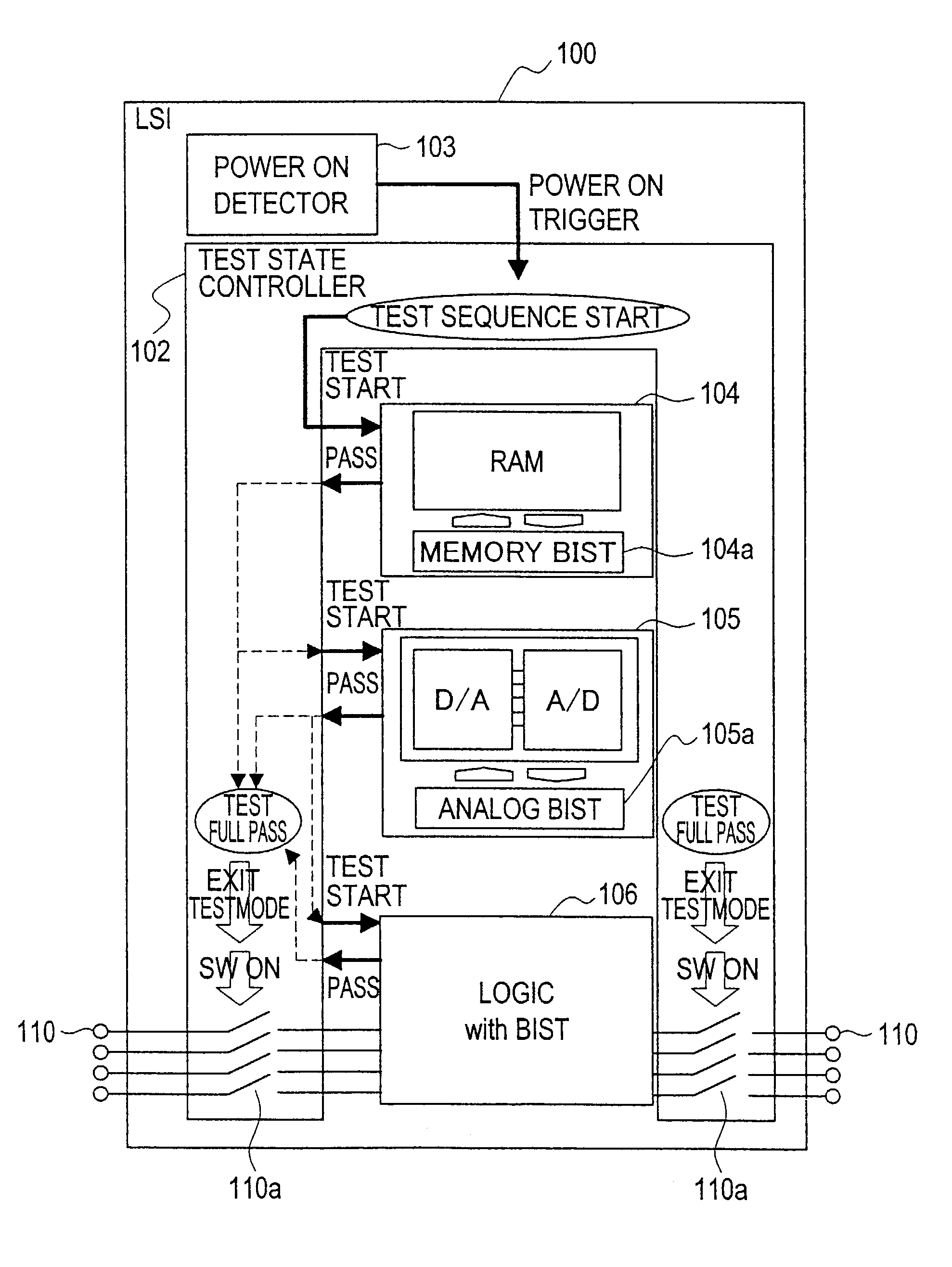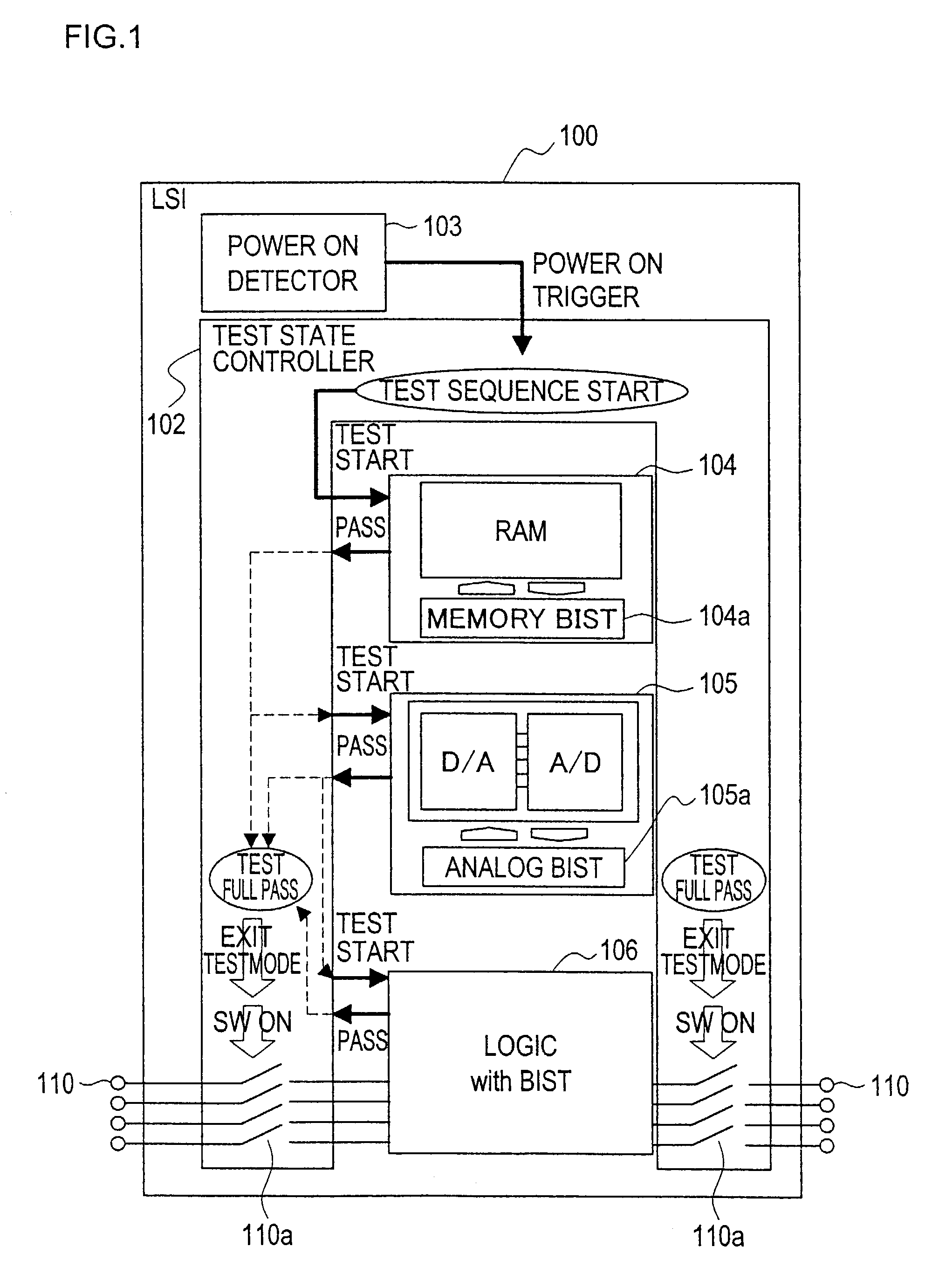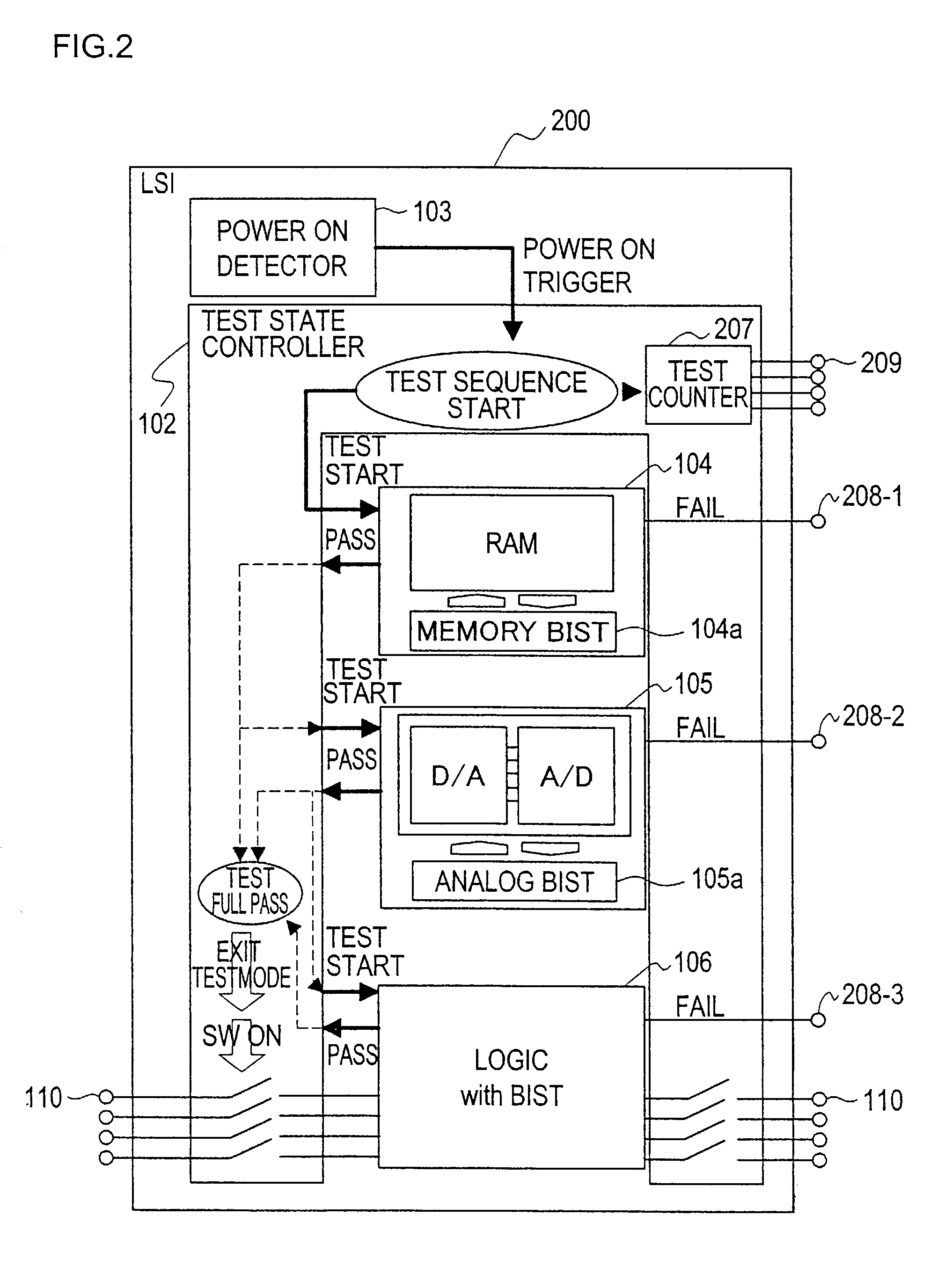Semiconductor integrated circuit having functional modules each including a built-in self testing circuit
a technology of integrated circuits and functional modules, applied in the field of semiconductor integrated circuits, can solve the problems of reducing the scale of the system configuration, including the power-on detection circuit provided outside the lsi, and the accuracy of the self-test less than completely reliable, so as to reduce the physical size of the nonvolatile memories
- Summary
- Abstract
- Description
- Claims
- Application Information
AI Technical Summary
Benefits of technology
Problems solved by technology
Method used
Image
Examples
first embodiment
[0024]The semiconductor integrated circuit in the first embodiment is now explained in reference to FIG. 1.
[0025]A semiconductor integrated circuit 100 comprises a power-on detection circuit 103 that detects that the power to the semiconductor integrated circuit 100 has been turned on and a self test control circuit 102 that shifts the semiconductor integrated circuit 100 into a self test mode in response to a trigger signal generated by the power-on detection circuit 103.
[0026]A memory 104, an analog circuit 105 and a logic circuit 106 each constituted as a functional module are mounted at the semiconductor integrated circuit 100. The memory 104 in this structure may be, for instance, a RAM (random access memory) which is a volatile storage medium. The RAM may be any of various types of RAM including DRAM (dynamic RAM) having a dynamic storage function. In addition, the analog circuit 105 may be, for instance, a digital / analog (D / A) converter or an analog / digital (A / D) converter.
[0...
second embodiment
[0037]The semiconductor integrated circuit in the second embodiment is now explained in reference to FIG. 2.
[0038]As shown in FIG. 2, a semiconductor integrated circuit 200 is achieved by adding self test result output terminals 208-1, 208-2 and 208-3 through which the results of the self tests are output to the outside, a test counter 208 capable of measuring the length of time (test cycle) elapsing through each self test to allow information as to at what point in time an error has occurred to be output and a counter output terminal 209 through which the value obtained at the test counter 207 is output to the structure of the semiconductor integrated circuit 100 achieved in the first embodiment. Since other components are substantially identical to those in the first embodiment, the same reference numerals are assigned to them to preclude the necessity for a repeated explanation thereof.
[0039]Next, the individual self testing operations performed on the memory 104, the analog circ...
third embodiment
[0043]An example of the logic circuit 106 and an example of the logic built-in self testing circuit provided in part of the logic circuit are now explained in reference to the third embodiment.
[0044]FIG. 3 shows an example of a logic circuit having a SCAN test circuit.
[0045]This logic circuit 300 includes a testing system for conducting a test referred to as a SCAN test. The logic circuit 300 may be tested at the time of shipment of the product in which the logic circuit 300 is mounted, for instance. In the test mode, the chip terminals of the logic circuit 300 are designated as a SCAN shift enable terminal 301, SCAN-in terminals 302-1 and 302-2, SCAN-out terminals 303-1 and 303-2, a clock terminal 304 and a SCAN test mode terminal 305. The designations of the individual terminals are determined by terminal designation selectors 310-1 and 310-2.
[0046]Next, the testing operation performed in the logic circuit 300 is explained.
[0047]The test is started as a test mode signal is input t...
PUM
 Login to View More
Login to View More Abstract
Description
Claims
Application Information
 Login to View More
Login to View More - R&D
- Intellectual Property
- Life Sciences
- Materials
- Tech Scout
- Unparalleled Data Quality
- Higher Quality Content
- 60% Fewer Hallucinations
Browse by: Latest US Patents, China's latest patents, Technical Efficacy Thesaurus, Application Domain, Technology Topic, Popular Technical Reports.
© 2025 PatSnap. All rights reserved.Legal|Privacy policy|Modern Slavery Act Transparency Statement|Sitemap|About US| Contact US: help@patsnap.com



